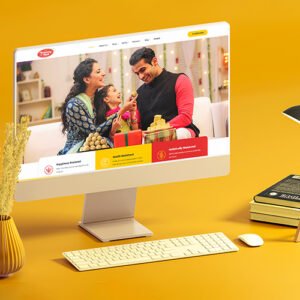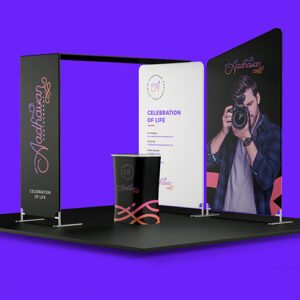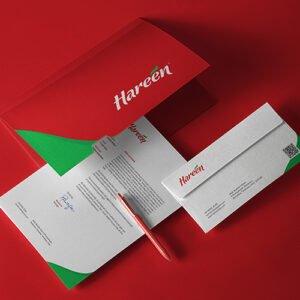In today’s visual-first world, color in marketing and design plays a crucial role in shaping how people feel, think, and act. The moment a customer sees your brand, product, or storefront, their brain begins interpreting its meaning—often based on color. From color psychology in branding to how it affects behavior in food, retail, and entertainment, the right color choices can directly influence customer behavior and drive sales.
Let’s explore how businesses in food, retail, and entertainment use color to create emotional impact and how you, as a designer or business owner, can use this knowledge to your advantage.
The Power of Color Psychology in Branding
Here’s how some common colors are perceived:
-
Red: Passion, appetite, urgency
-
Yellow: Energy, cheerfulness, attention
-
Blue: Trust, professionalism, calm
-
Green: Health, nature, freshness
-
Black: Luxury, elegance, authority
-
Orange: Warmth, creativity, action
-
Purple: Innovation, imagination, prestige
By understanding color psychology in branding, companies can craft messages that instantly connect with their target audience.
Color Strategy in Food Branding
Food branding color strategy is all about making people hungry, excited, and connected to the food experience.
Red & Yellow – The Hunger Colors
Fast food giants like McDonald’s and KFC use red and yellow strategically. These colors stimulate appetite and create urgency.
Red increases heart rate and hunger
Yellow creates warmth and happiness
Together, they’re a proven combination in food branding color strategy for quick-service restaurants.
Green – For Health & Freshness
Organic and health-based brands like Sweetgreen or Subway use green to symbolize freshness, sustainability, and clean eating.
Black & Gold – For Premium Dining
Luxury food brands and fine dining use black, gold, or deep burgundy to convey exclusivity and richness.
Key Insight: When applying color psychology in branding for the food industry, avoid blue unless representing water or mint—it can suppress appetite.
How to Use Color in Retail
If you’re wondering how to use color in retail, the answer lies in creating emotional triggers that influence walk-ins, purchases, and brand loyalty.
Red – Attention & Action
Used for sale signs, red creates urgency and excitement. It grabs attention instantly and is perfect for limited-time offers.
Blue – Trust & Dependability
Trusted by major brands like Walmart and Amazon, blue instills a sense of reliability. It’s widely used in both physical and online retail to build consumer trust.
Yellow & Orange – Impulse & Optimism
Bright and bold, yellow and orange are great for window displays, packaging, or promotional zones. They create enthusiasm and encourage impulse purchases.
Black & White – Luxury & Simplicity
High-end brands like Chanel or Zara use minimal black-and-white palettes to appear sleek, premium, and timeless.
When understanding how to use color in retail, always align colors with both the product type and customer mindset.
Color in Entertainment Branding
In the world of entertainment, color in marketing and design is used to set the tone, establish genre, and stir emotions within seconds.
Red – Drama & Excitement
Used in action films, music promotions, and live event branding, red evokes intensity and grabs attention.
Blue – Calm & Cool
For sci-fi, tech, or music apps, blue communicates sophistication and emotional depth.
Neon Colors – Modern & Youthful
Bright neon shades are trending in gaming, pop culture, and music festival promotions, attracting younger audiences and adding energy.
Earthy Tones – Authentic & Emotional
Films or shows with cultural and emotional depth often use warm earthy tones like terracotta, mustard, or brown to convey nostalgia and realism.
Color Impact on Customer Behavior
Whether in a restaurant, clothing store, or cinema hall, color deeply influences the customer experience. Here’s how:
Color affects perception – A red-themed menu feels more exciting than a blue one.
Color influences action – A red “Buy Now” button converts more than a grey one.
Color drives loyalty – A consistent color scheme builds brand trust over time.
Understanding the color impact on customer behavior helps you design not just visually appealing spaces and assets—but revenue-driving ones.
Final Thoughts
Color isn’t just visual—it’s psychological and strategic. Whether you’re working in food, retail, or entertainment, mastering color psychology in branding helps you build stronger emotional connections and boost customer conversions.
From understanding how to use color in retail to crafting an effective food branding color strategy, your knowledge of color impact on customer behavior can set your brand apart. Use color in marketing and design not just to impress—but to influence.








